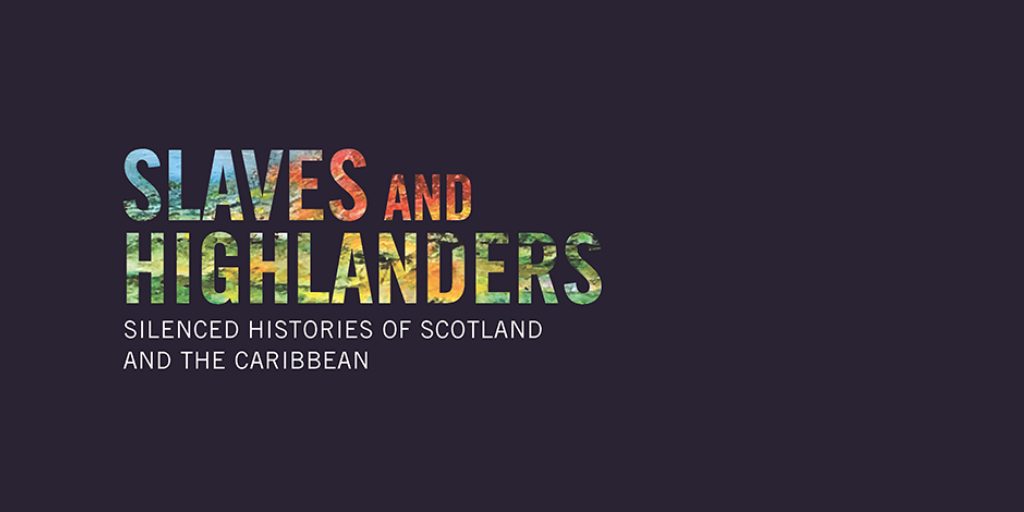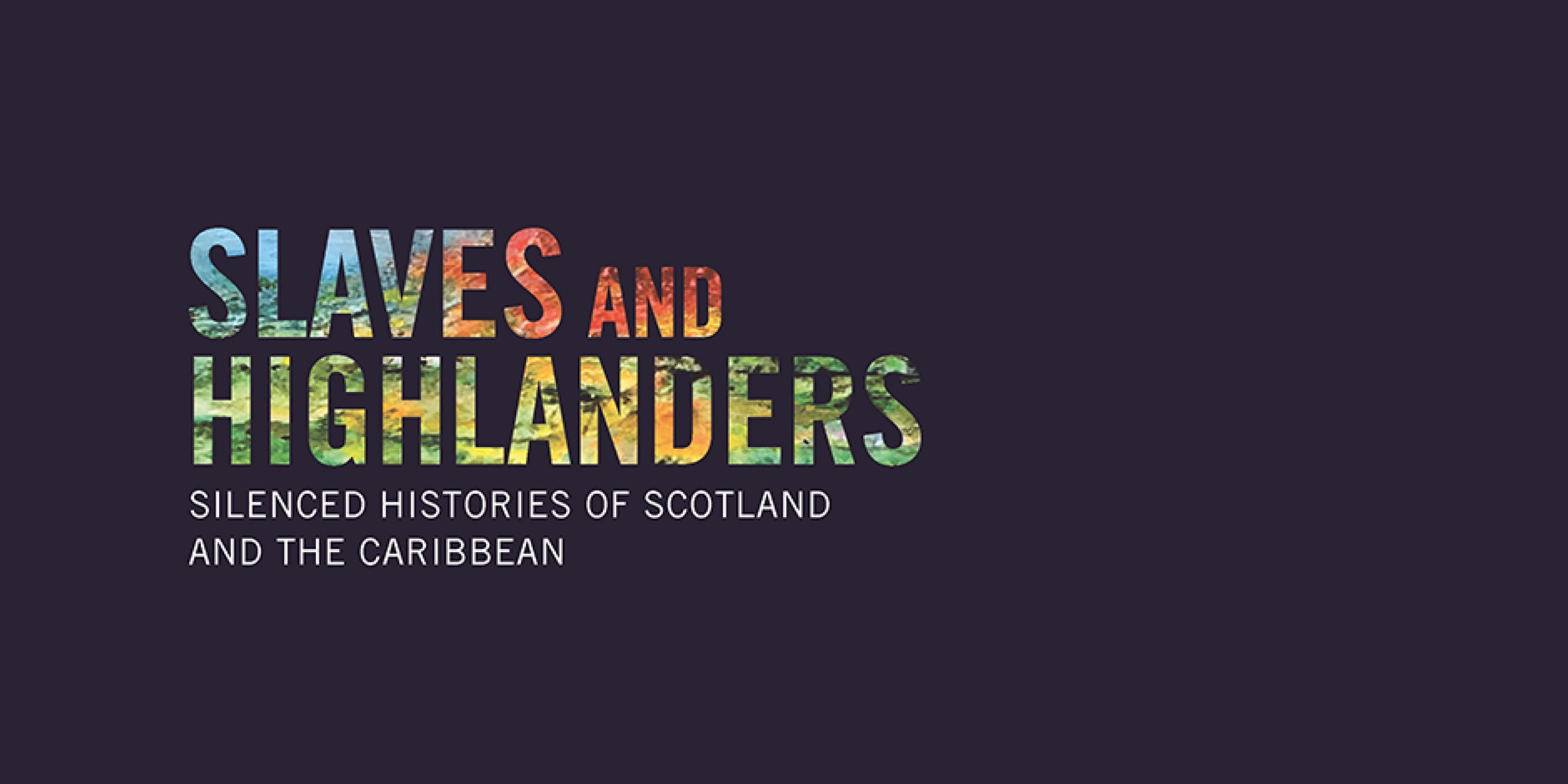
by David Alston

Can you tell us a bit about the book?
Slaves and Highlanders is an exploration of the role played by people from the North of Scotland in the slave trade and in the plantations of the Caribbean. It is about the exploitation of enslaved Africans and their descendants, the fortunes made, the impact of these fortunes on Highland history, and the legacies in Scotland and in the Caribbean of these crimes against humanity. I’ve used the word ‘slaves’ in the title and some will be uneasy about that, preferring the terms ‘enslaved’ or ‘enslaved people’. I understand that concern. I’ve used the word because I feel Scottish (and British) readers need to be reminded that this brutal system attempted to reduce people to things – commodities to be bought and sold. The focus of the book itself is to recover the silenced histories of individuals, especially the enslaved.
What’s going on in the cover image?
The cover uses a wonderfully vibrant image from the Guyanese artist Dudley Charles, titled Back Dam Fire. But the image can only be glimpsed through the words of the title. Just as the histories of millions have been silenced, so it is difficult for us to see what lies on the other side, out of sight and so often out of mind. I only wish the image of painting on the back of the cover could be larger – so that we could see more of what we are missing. Please search for Dudley’s name online and discover his work.
You’ve been researching this topic for a long time, when was the seed planted?
More than 20 years ago I read of a black pupil who, about 1818, attended the school in Cromarty, my home town. He and a white pupil had a knife fight. The white pupil was Hugh Miller, who became a respected journalist, folklore collector, geologist and churchman, known throughout Scotland and beyond. I wondered who the black pupil was and how he came to be in Cromarty. Things grew from that.
Did you get exclusive access to any new or hard-to-find sources?
I used some difficult-to-get-to sources, including for me the National Archives of Guyana, and I don’t think any other researchers will have looked at the records of the Scots Presbyterian Church in New Amsterdam (Guyana). But it has been of immense importance to me that so much has been digitised and made available online. I believe that making more material in Scottish archives available in this way, without charge, is part of the debt we owe to the peoples of the Caribbean whose histories are contained in these documents.
Did you discover anything particularly surprising?
I am constantly surprised and frequently shocked, even after 20 years. Perhaps one of the most difficult to understand is that in 1837 some formerly enslaved people in Guyana, who were still bound to forty hours of unpaid labour a week as ‘apprentices’, contributed funds for the relief of destitute Highlanders in Scotland.
Has your research in this area changed the way you see the world today?
It has changed my outlook and I think changed me. I now see our history in Scotland as at root a shared history and I would say that you do not truly understand the history of the Highlands unless you understand this entanglement with enslavement and the brutality which it involved. But my research has also given me the joy of friendships with people of African, Afro-Caribbean and Indo-Caribbean descent.
About the Book
Slaves and Highlanders explores the prominent role of Highland Scots in the exploitation of enslaved Africans and their descendants in the cotton, sugar and coffee plantations of the 18th and 19th centuries.

About the Author
David Alston is a Historian and Independent Researcher. He is the author of Ross & Cromarty: A Historical Guide (1997) and My Little Town of Cromarty: The History of a Northern Scottish Town (2006). He was a Highland Councillor and from 1991–2003 was curator/manager of Cromarty Courthouse Museum. He has published articles on the Highlands and Slavery including ‘Very Rapid and Splendid Fortunes: Highland Scots in Berbice (Guyana) in the early nineteenth century’, in Transactions of the Gaelic Society of Inverness, (2007) and wrote a chapter in the T.D. Devine edited collection ‘Recovering Scotland’s Slavery Past’ (EUP, 2015).






